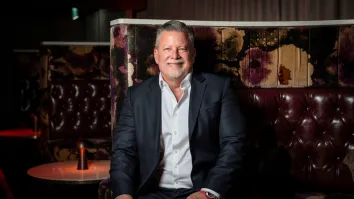
How is Uber changing the QSR environment?
Written by Peter Buckingham, managing director of Spectrum Analysis Australia Pty Ltd.
Uber deliveries may seem fantastic for the customer, but what is the business and social reality hiding behind Uber Eats’ the flashy app and feel good brand? In the last 3 months I have personally availed myself of the convenience Uber Eats deliveries offers (and we are 60+). In the tech-savvy hipster enclaves of inner city Melbourne, Uber Eats usage is approaching binge proportions.
Antony Crowther, Managing Director of New York Minute Burgers, and a 20-year QSR industry veteran, argues that the massive uptake of Uber Eats represents the single biggest industry shake up of the last 50 years. Operating an expanding gourmet burger franchise, Antony knows that the Uber economy means that businesses much change their models or perish. Unbeknown to most consumers of Uber Eats, the multinational tech-giant carves 30 – 40% of the sale price for every order away from small business, and into their substantial coffers. For an industry based on a 10 – 20% profit margin, Antony says you don’t have to be a genius to understand that Uber’s 30 – 40% commission effectively obliterates small business’s profit margin.
Are you seeing the following effects in the business metrics of your store?
- Sales seem to be constant
- You are seeing fewer customers at the tables, and less people coming through the door.
- Expenses seem to have gone up, as you now have a new and growing expense called “Payment to Uber”.
- The Net Profit is now lower than before, and the Net Profit : Sales ratio is decreasing.
In the meantime you are continually under pressure for:
- Rental increases, as your lease has set annual increases well above CPI.
- Labour costs are rising.
- If you don’t offer Uber delivery, your sales will drop?
- You don’t want to re employ your own delivery drivers, as they are too inflexible.
You may have put all this down to seasonal adjustments, or you just may have not noticed the financial changes yet, but could it be the growing effects of Uber deliveries on your business?
Background
Uber started as a great idea to help utilise the vehicles and drivers who would be relatively quiet over dinner time. It began where Uber would charge a 20% commission on the Sales, and at first it looked like some incremental business over your competitors. In many cases this gave businesses access to the Delivery market without having to employ delivery drivers.
Uber have progressively pushed the commissions up to now be around 30% of Sales, and as “nearly everybody” is using this service, the incremental business has dropped back to your normal market share.
What does life with Uber look like?
From a customer’s viewpoint, we now enjoy a quicker delivery, and the convenience of an App, including payment taken directly from our accounts. Being able to see the arrival of our food coming on our phone all combines to make Uber a far superior service to having your own delivery drivers, or other 3rd party delivery services, who do not have the flexibility of the numbers of Uber vehicles.
From the store owner’s view, the negative issues that come from these Uber sales include minimal incremental sales you may have enjoyed as the customer previously came to the restaurant, maybe bought a drink, and generally stayed longer and spent more money.
Antony predicts that the financial implications of Uber will be felt right across the retail industry. Shopping centres have been able to replace the lesser demand in specialty businesses like clothing, and large department stores with more and more food offers. Restaurants have become larger as the casual dining fad has taken effect, and we have been seeing the growth of the alfresco centres like Knox Ozone, Charleston Square and many other Super and Major Regionals who have moved into these areas.
If rentals keep climbing, and we see less people eating in the restaurants as these sales are outsourced to Uber Eats, then the rental pressures will drive many of these businesses broke, or a re-adjusted rental level will be necessary.
There seem to be 2 other options that could be considered:
1. Right Sizing the restaurant.
If Uber is becoming the largest “client” of the restaurant, then should you be looking at a smaller footprint, less tables and chairs, hopefully a smaller rent, and re align the business to the new operations? Many facets of the business could be addressed including levels of table service, convenient parking and pick up for the Uber drivers – so they are not in the way, and even a person solely responsible for this category of sales.
2. The Black Kitchen
I believe some businesses have looked at a separate “non-retail” kitchen, set up more in an industrial area or lower cost, back street establishment. This facility would be where the Uber sales can be cooked, made up and picked up from. Whilst distance to customer can be an issue, for areas of inner Melbourne and inner Sydney this could be a good option to decongest the more formal restaurants, and reduce the high rentals paid for purely kitchen facilities.
The Black Kitchen would need to work on a set of economics knowing all the business will be paying the Uber delivery charges (around 30% of Sales), but a low rent, tailor made environment may be able to handle the Uber sales for about a 5km radius area quite easily.
Summary
According to Antony, this is the biggest game changer in the food business in his 20+ years, and those that do not address it now may be out of business before they know it. Whilst great restaurants with unique products may see the benefit of incremental sales through Uber deliveries, most will just see the same sales through the store, with a new additional cost that is reducing their net margin very quickly.
Think of Uber more as a cost than additional business, and see what is happening to your long term economics.


























